Rhik Samadder tried horseback riding, and wrote about it in The Guardian:
I tell the brown-and-white beast to walk, and miraculously, it does. I’m riding! A horse! It’s more comfortable than I’d imagined. Bumble has a broad back, a slow wave of a gait. I hadn’t anticipated this, the easy rise and fall, the sleepy smell of sweaty flank. It should be alarming to be up this high, but it’s weirdly calming. Does being lifted from ground level elevate your attention, to a stratum where larger thoughts reside? I smell clean air. I whisper into Bumble’s fluffy forelock: “I don’t know if I want children.”
This paragraph represents a correction from the original:
A feature on horseriding evoked an improbable scene when it referred to the rider whispering into a “fluffy fetlock” (‘I pretend I am in control. I feel like the Marlboro man’, 13 September, G2, page 2). A fetlock is part of a horse’s leg, and therefore not near its ears.
Samadder has discovered, as I have, that horseworld involves learning an entirely new vocabulary. And sometimes you get it wrong.
Ride on, kindred spirit!
Craigie Hill is a track from Karine Polwart, from her upcoming album Still As Your Sleeping. I’ve listened to it about 100 times today.
When you run out of things to sketch1, sketch your pencil.
- I haven’t run out of things to sketch.
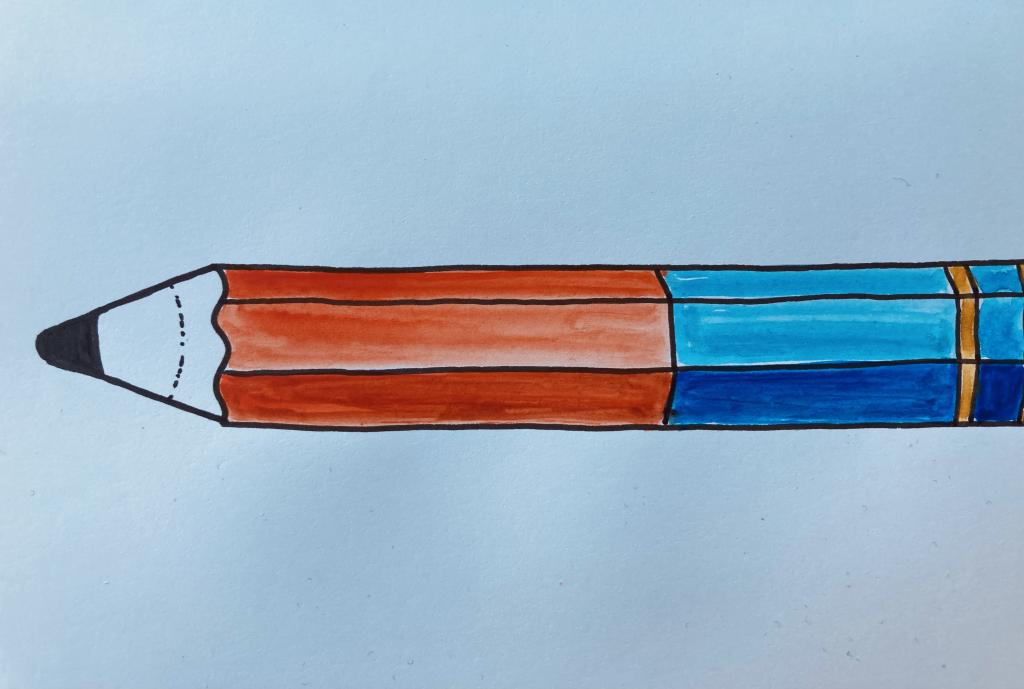
Taylor Swift’s Tim McGraw, released in 2006, a solid country song, has new life breathed into it by Maggie Rogers’ 2018 cover, which makes it something else entirely.
We bought this Kenmore clothes dryer at Sears twenty-one years ago:
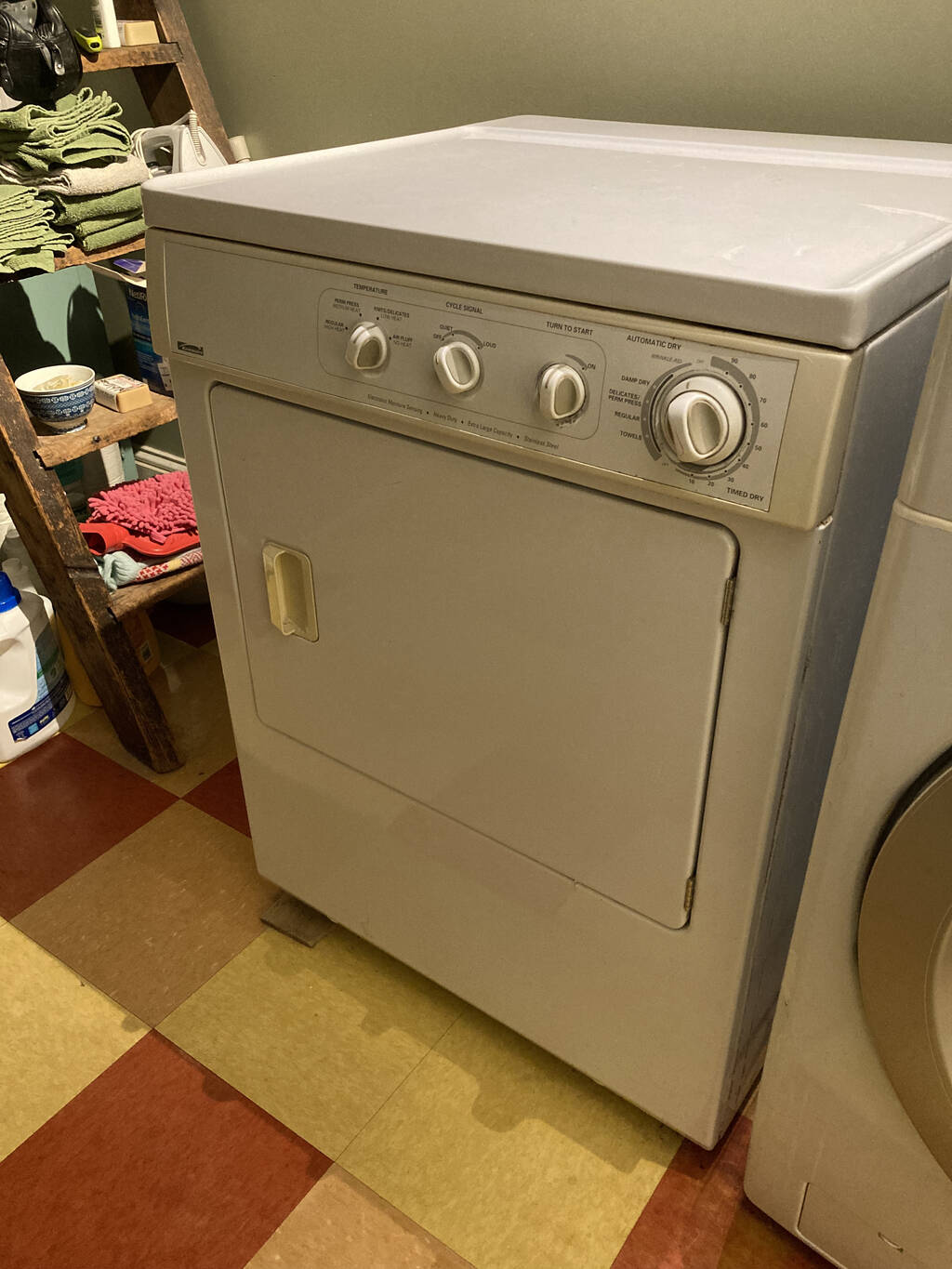
The dryer served us well, but for the last year it’s had the unfortunate new feature of occasionally ripping holes in our clothes, and sometimes setting them on fire.
Not “on fire” in the sense that flames were involved—I don’t think—but rather rendering them lightly singed.
All of this was caused by a drum no longer aligned properly with the body, leaving a gap into which clothes could get caught, and then spun around with much friction.
It is a testament to my ability to procrastinate, and my dislike of the appliance purchasing and delivery experience, that I was willing to have my clothes torn to shreds and set alight to avoid fixing the problem.
But I finally overcame that: Olivia and I popped in to M&M Furniture in East Royalty on Saturday morning, talked to the friendly and helpful Helen Tran, and picked out a sleek, modern LG DLE3600W. Total time to purchase: 15 minutes. Consumer Reports was not involved, meaning my father is turning over in his grave (and perhaps that I will live to regret my haste).
The new dryer arrived today, and was hefted into place, and installed, by a capable crew of two, who also carted away the fire-dryer.
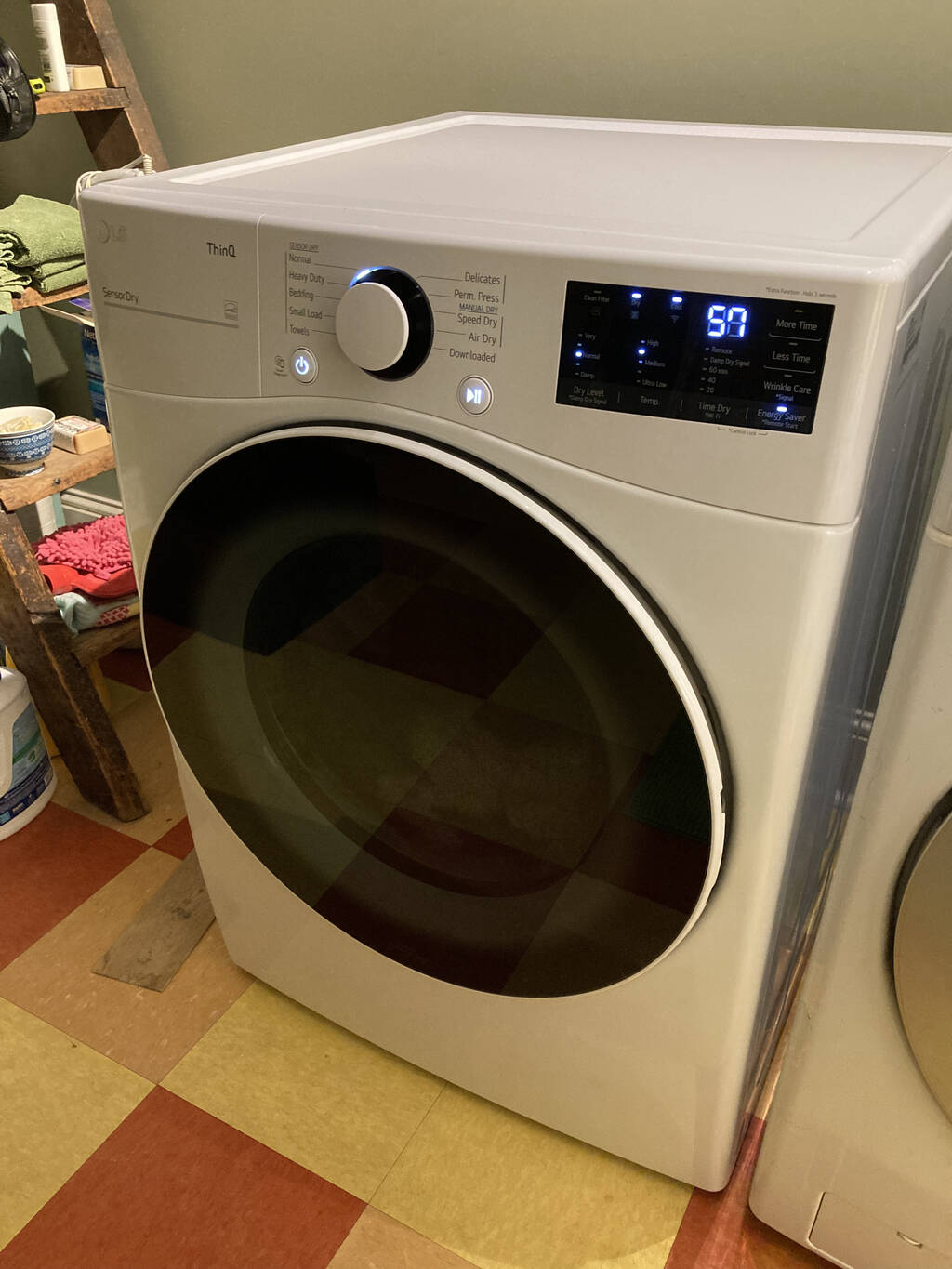
I’ve dried two loads of laundry in the new dryer so far, and none of my clothes have caught fire. Which you think would be a kind of baseline for a clothes dryer, but still seems amazing to me in light of recent practice.
It being 2021, the new dryer is, of course, also wifi-connected, meaning that I can, from my phone, stop it, start it, and tell how much time is left until the clothes are dry, from anywhere in the world!

I am unclear as to how this is an improvement over the previous “the clothes are dry when the dryer stops” method, but I’m game to experiment. In theory I can also say “Alexa, dry the clothes,” but I haven’t got that set up yet.
Diver William Walker saved Winchester Cathedral:
From 1906, Walker laboured under water below the Cathedral for six hours a day at depths up to 6 metres (20 ft). He worked in total darkness, using his bare hands to feel his way through the cloudy, muddy water.
His huge, heavy diving suit took a long time to put on. So when he stopped for lunch, he’d just take off his helmet. He also sometimes smoked his pipe, which he thought would kill off any germs.
(via the aforementioned Geoff Manaugh)
Geoff Manaugh, writing in Of Comets and Ruin in the Volume 24: Counterculture in 2010, about his friend Allen Ginsburg:
Allen once urged me to write as simply as possible so that whatever I wrote could be translated and thus, reach as many people as I could all over the world. It seemed like absurd advice: why not strive to write something that was worth translating in the first place? But his point was to get the message out, to make people — no matter what continent they were standing on or what language they spoke — think differently about something, about everything, about one particular thing they’d never thought of before. Allen thought we should write for the entire world, so that people with nothing in common with us — not politics, not gender, perhaps not even species — might get some vicarious thrill out of a unique idea or experience. ‘Particulars!’ This terrestrial moment lives on, he’d often point out, whether or not someone is recording it. But a planetary human community of readers and friends will never continue if we give up telling each other stories, if we stop reconfiguring myths, stop typing our own magic psalms of rotting cities.
Bill Voyd, from Funk Architecture in Shelter and Society, 1969, on Drop City:
The hardest time in a commune, particularly Drop City, is the time after the building gets done. While everyone is working together on actual construction the energy is centered, there is fantastic high spirit, everyone knows what he is doing all the time. But after the building is done comes a time of dissolution. There’s no focus for the group energy, and most hippies don’t have anything to do with their individual energy.
I’ve been trying to piece apart why my level of general anxiety has been exponentially higher since Catherine died: this has never made sense, as the really hard parts, the parts you think would push one over the edge, were in the years leading up to her death. Perhaps this notion explains why.
(If you’re interested in learning more about Drop City, there’s a documentary for that, which you can stream on demand).
Sarah Miller writes about her bedclothes:
Adult bed was about aesthetics, not pets or snacks. “Adult bed” just meant no more aggressively mismatched sheets, pillowcases and comforter covers. The bed didn’t have to have hotel-quality linen matching, like where every single element is the exact same fabric and color. “I just don’t want it to be a complete mishmash,” T. said. “Right now we have a pink paisley sheet from Pottery Barn Kids and then we have another Pottery Barn Kids thing, a quilt with vintage airplanes on it, primary colors – and the pillowcases are earth-toned, red and tan, with dusty blue flowers!” He said our bed was giving him an anxiety attack.
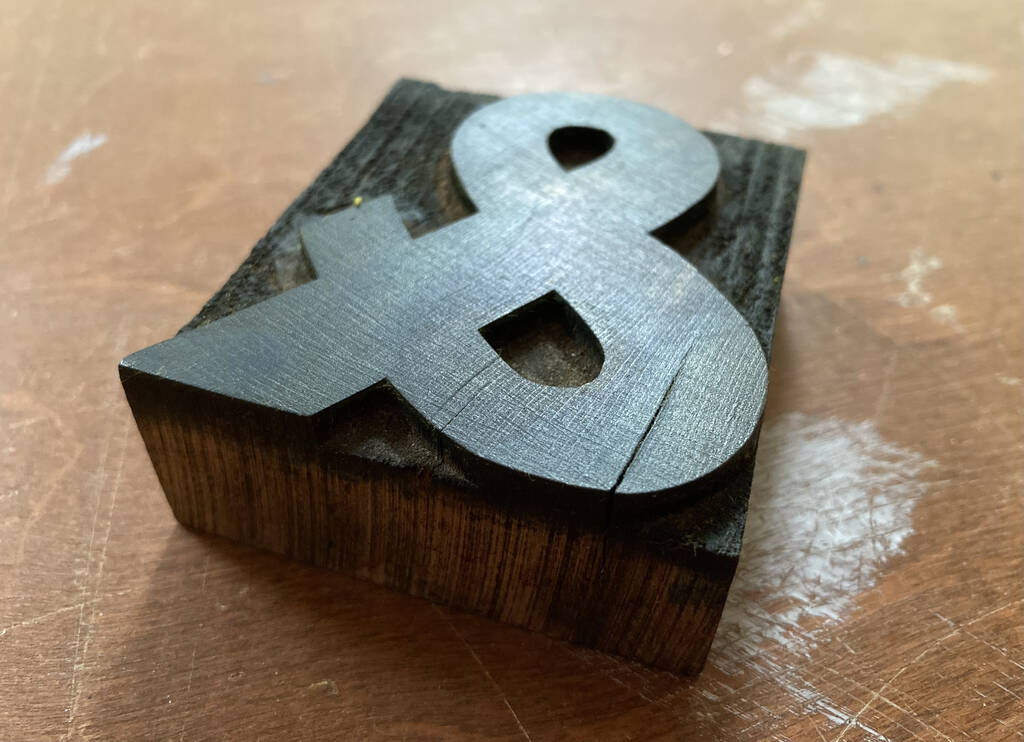

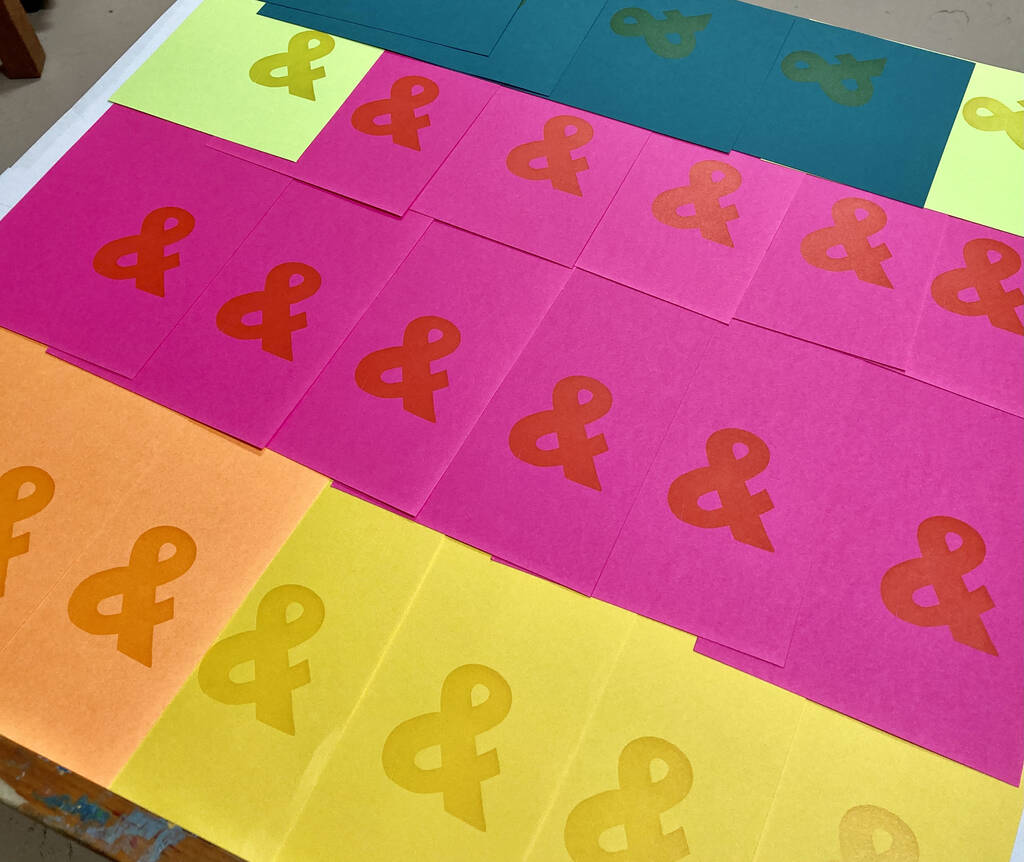
 I am
I am